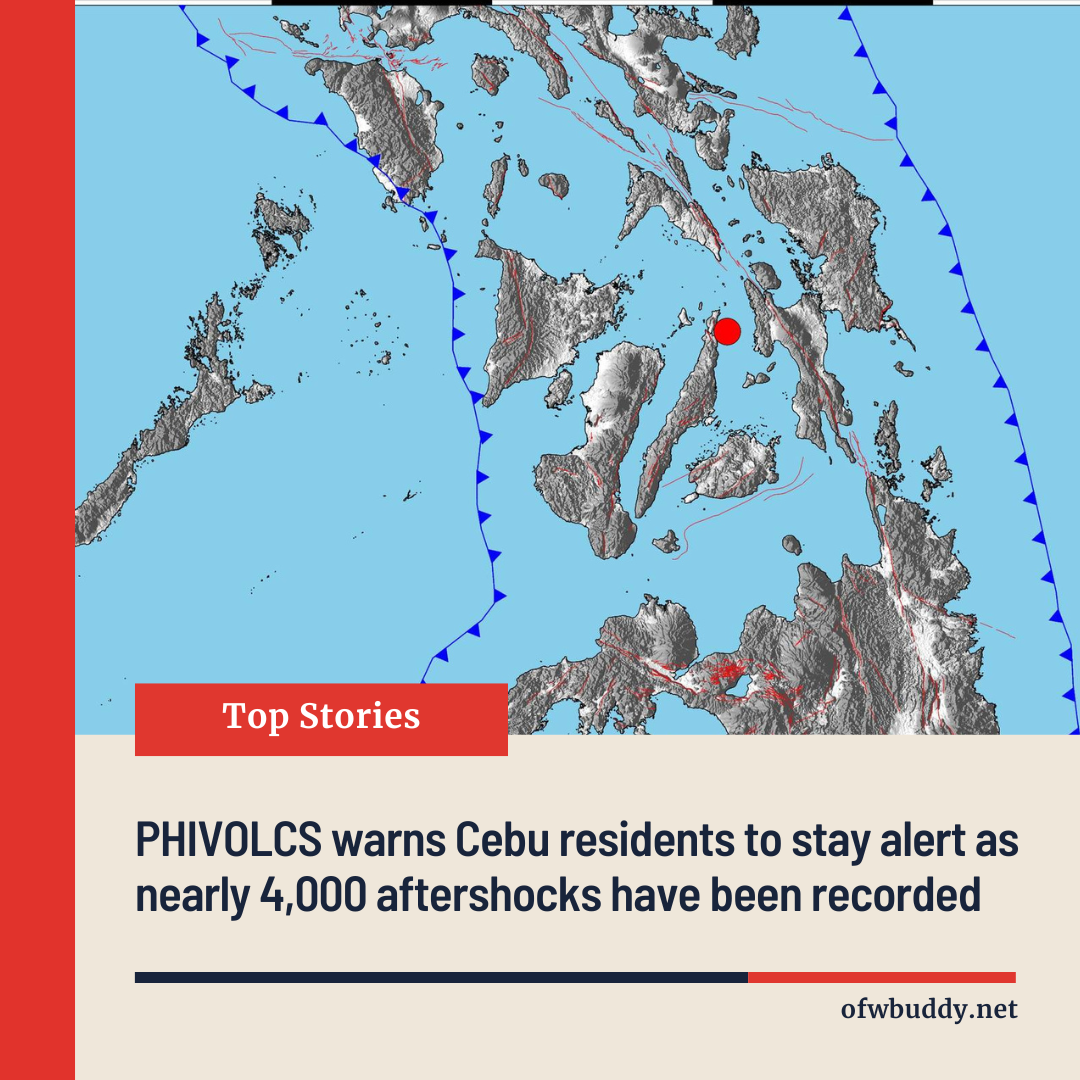Cebu, Philippines (October 3, 2025)— The Philippine Institute of Volcanology and Seismology (PHIVOLCS) has reminded residents to remain cautious as aftershocks continue to be recorded following the magnitude 6.9 earthquake that struck Bogo City, Cebu earlier this week.
According to PHIVOLCS Senior Science Research Specialist Johnlery Deximo, aftershocks should not be ignored as they can still pose serious risks, particularly to weakened structures that did not collapse during the main quake.
Deximo added that environmental factors such as continuous rainfall and frequent ground shaking in affected areas could further weaken soil foundations, increasing the risk of landslides or structural damage.
Based on PHIVOLCS monitoring, nearly 4,000 aftershocks have been recorded so far. Of these, 806 were confirmed through multiple seismic stations, while 21 were strong enough to be felt by residents. The magnitudes of the aftershocks range from 1.0 to 5.1.
Authorities expect aftershocks to persist for several weeks, and the public is advised to remain alert, avoid unstable structures, and follow guidance from local disaster risk reduction officials.

